Hello from North Vancouver! As some of you know, Dennis and I recently moved from our house on Gabriola Island to the twenty-second floor of an apartment tower in North Van, just off Lonsdale. Change is in the air!
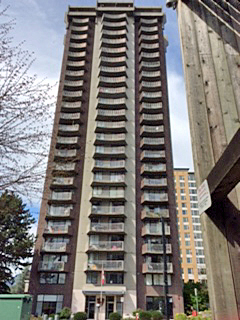
The day we moved in, Violet-green Swallows swooped along the building, an extended family of Northwestern Crows held a noisy conference on the green roof of the building across from us, White-crowned Sparrows sang in the plaza, and Dark-eyed Juncos trilled from the trees. So, here on the edge of the mountains, most of the birds I’ve seen so far are the same species I know from Gabriola.
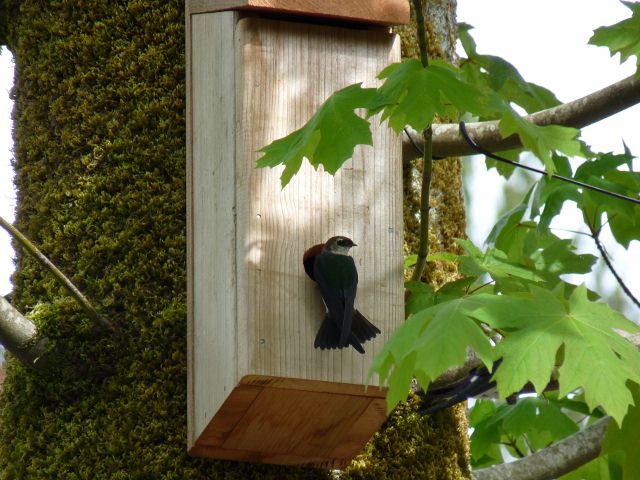
Violet-green Swallow checking out its Gabriola home.
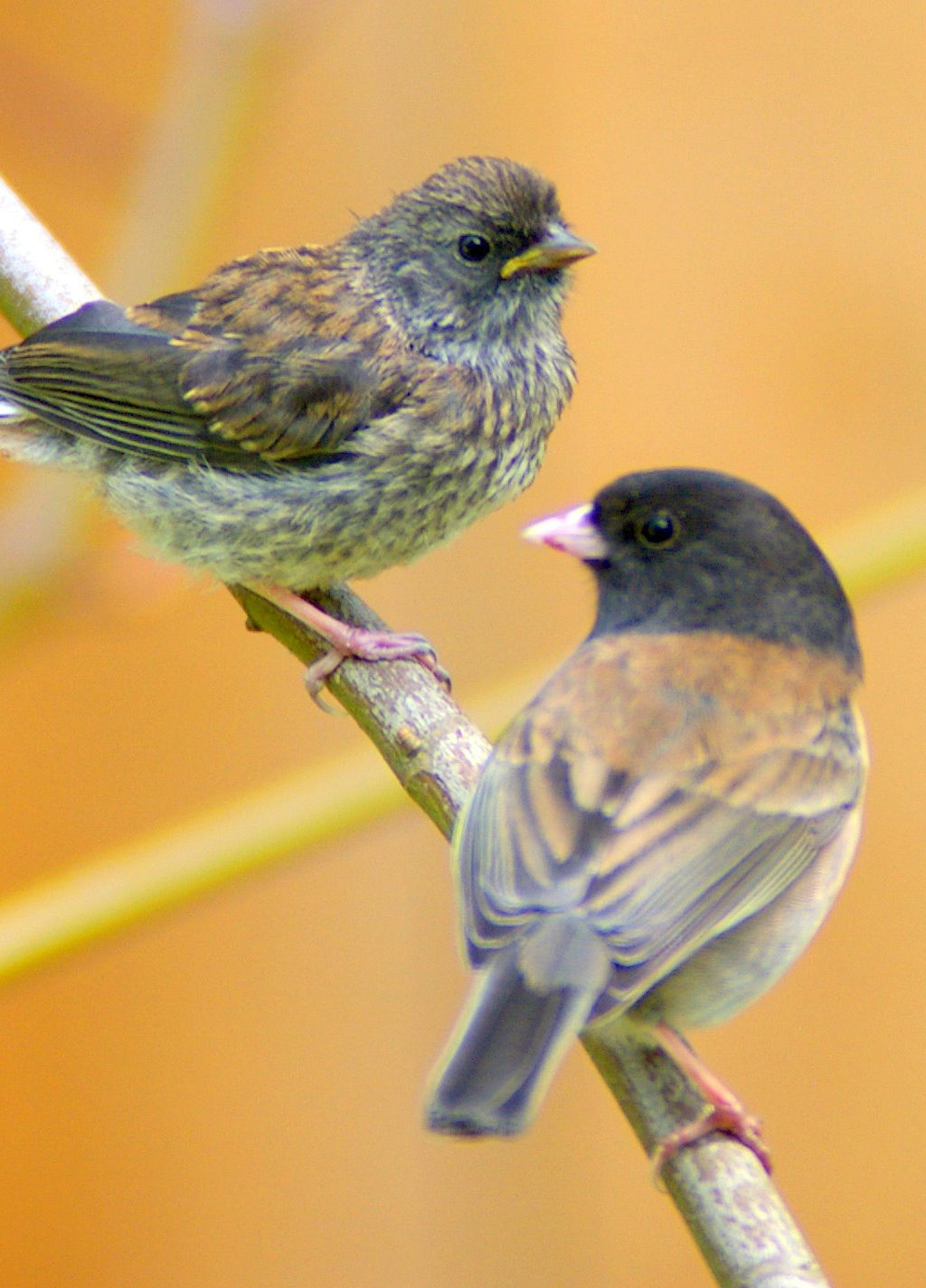
Junco mom and fledgling on Gabriola Island. Photo by Garry Davey.
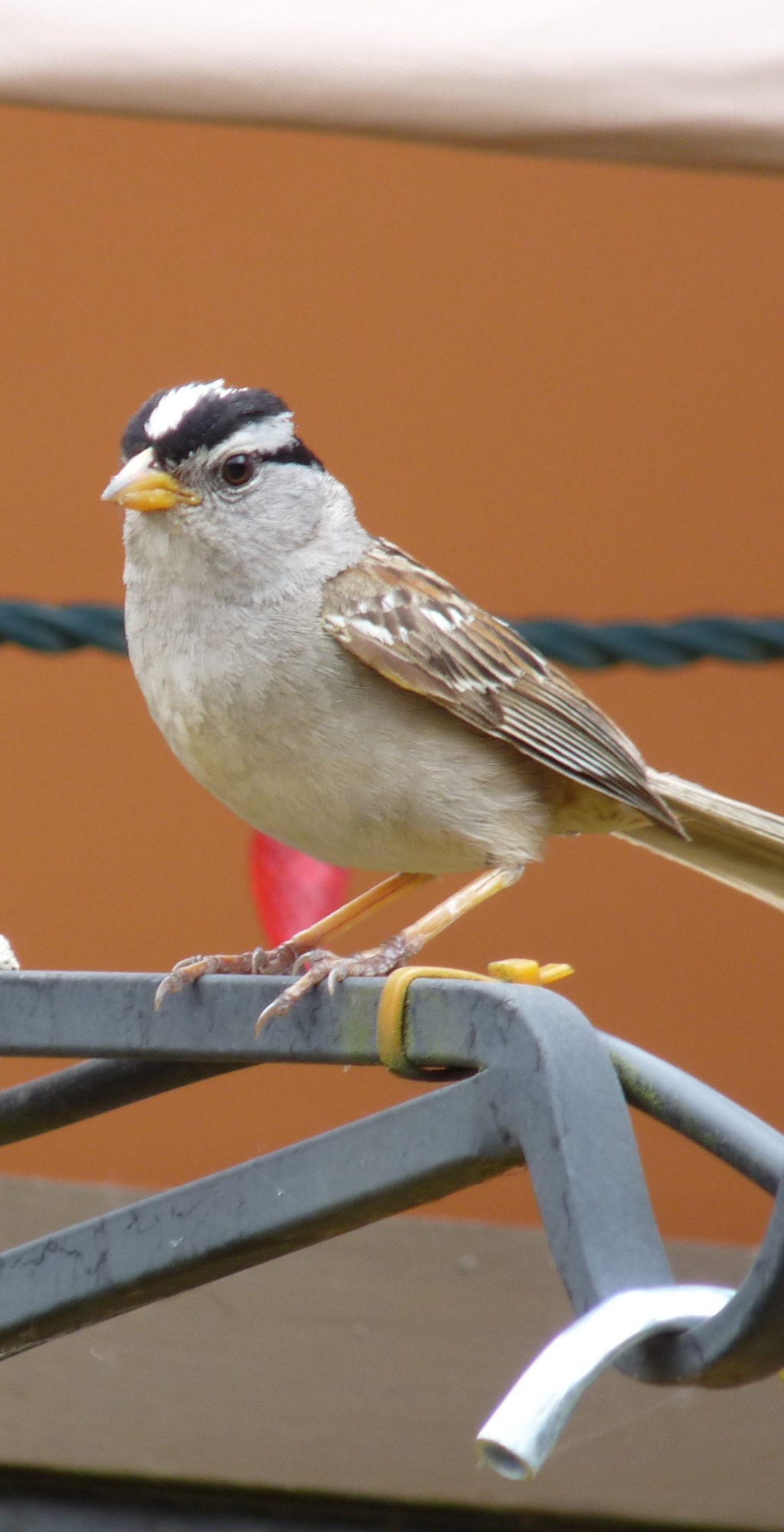
White-crowned Sparrow on Gabriola
Now that my novel is finally finished (there are lots of birds in it!) I look forward to writing for Bird Canada on a monthly schedule again. I’ll be telling bird-related stories and exploring birding culture, environmental issues, and events and resources of interest. And because I’m a writer — and definitely not a photographer — I’ve teamed up with a wonderful North Van wildlife photographer, Pierre Cenerelli, who’s offered to provide me with photographs whenever he can. If you haven’t seen Pierre’s photographs yet, you’re in for a treat! To whet your appetite, here are three shots from his recent birding trip to Point Pelee in Ontario.
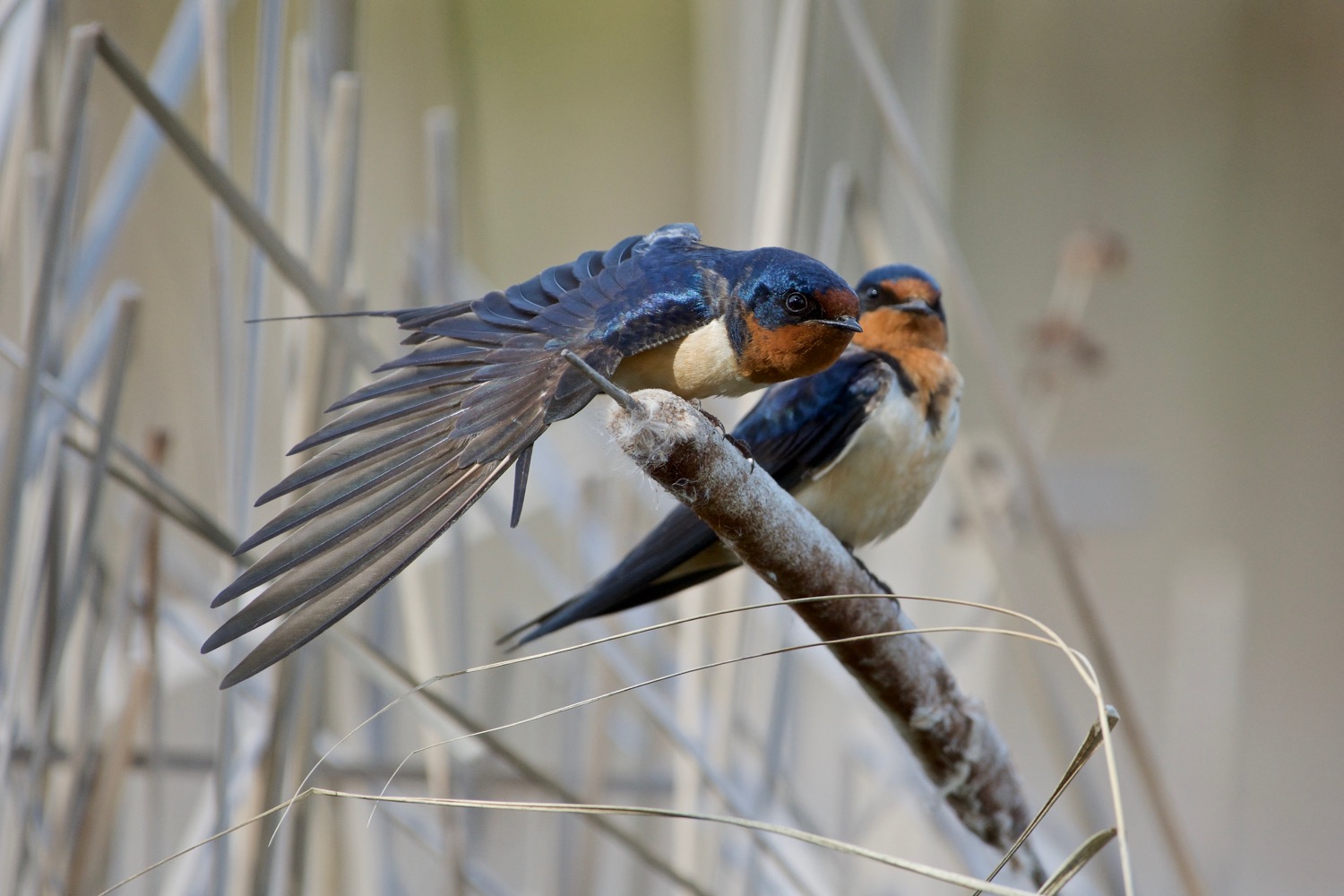
Barn Swallows – Photo by Pierre Cenerelli
Pierre says: In this photo, the bird is giving quite a nice wing stretch! It was especially interesting to observe this species as they obtained mud and twigs to build their nests. Taken at the head of the Marsh Boardwalk in Point Pelee National Park, Essex County, Ontario on May 15, 2018. Wild, as shot; not baited, called in or set up.

Common Tern. Photo by Pierre Cenerelli.
Pierre explains: This Common Tern (presumably the male) is turning towards its mate to present it with a fish it caught in front of my amazed eyes only a few moments before. You’ll be glad to know she accepted the gift and promptly swallowed it whole! Taken May 11, 2018 at Jack Darling Memorial Park, Mississauga, Ontario. Wild, as shot; not baited, called in or set up.

Red-eyed Vireo – Photo by Pierre Cenerelli
Pierre’s comment: In this photo you not only have a relatively decent background and good pose for the bird, but you can also clearly see its red eye, slightly hooked bill and even details in its feathers. Taken by a very happy bird photographer at The Tip of Point Pelee National Park, Essex County, Ontario. Wild, as shot; not baited, called in or set up.
Clearly, Pierre knows what he’s doing! So I asked him a few questions about photographing birds.
How is photographing birds different from photographing other subjects?
PC: Because birds don’t sit still, you need fast shutter speeds! And since they can simply fly away when they’re bothered, you also need a long lens… at the very least, 6x (300mm on a full frame camera), but longer is far better. It is also a good idea to own a camera with a fast shutter burst speed.
To illustrate the point, here’s a series of shots Pierre took of Golden-crowned Kinglets in motion!

Golden-crowned Kinglets in motion! Photos by Pierre Cenerelli.
The fact that birds are always on the move is a challenge unlike that facing other photographers – except maybe those specializing in race cars or stampeding horses. But even these subjects tend to stay in your line of sight for more than half a second. For me, one of the crucial qualities for getting a decent shot, since I’m relying on luck rather than skill, is patience!
How did you get interested in birding, and in taking photos of them?
PC: I’ve been interested in birding since I was a child, thanks to my father and uncle, who were both avid birders, especially when the spring warblers arrived in Quebec’s Laurentian mountains. And I became interested in photography as a teenager, when I first became involved in my high school’s yearbook. At the time, I focused on human-centred events, with a particular interest in sports.
What are some of your favourite shots — and will you share the stories behind them?
Sure. I took this one as I was walking south on the Spirit Trail, getting close to Kings Mill dog park. I was wondering if I would see Ospreys on the human-made nest on the other side of the water. Well, not only did I see them, but it seems I caught them in the act as they were working hard to have a successful nesting season! It was a loud affair, for sure, especially after the gulls got all excited as well. I have to say that was rather shocked by the garbage that made up this nest and wondered how safe it might be for the birds. Taken April 25, 2018 in North Vancouver. Wild, as shot; not baited, called in or set up.
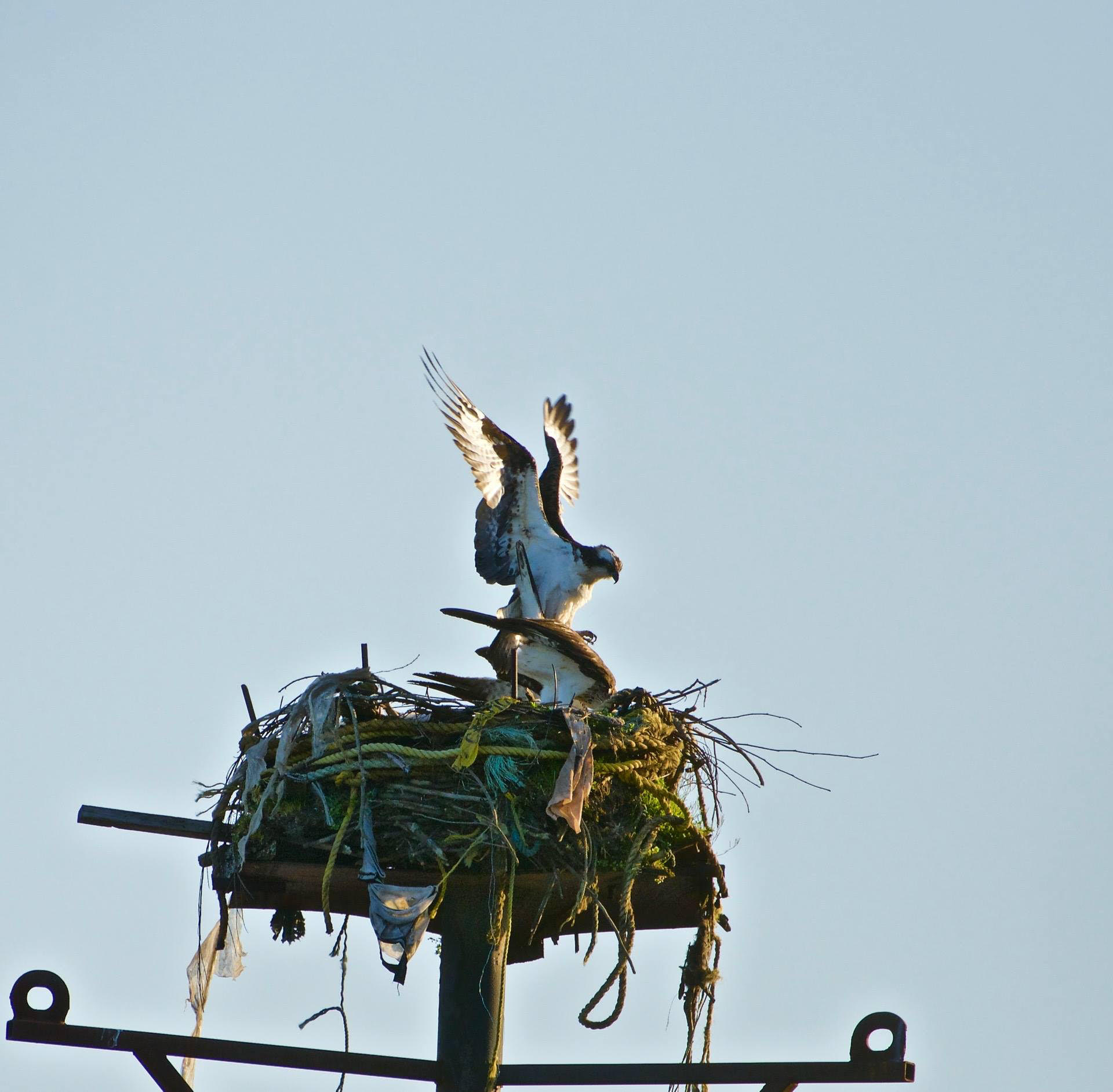
Ospreys. Photo by Pierre Cenerelli.
I found some pretty cooperative kinglets the other day, but the lighting conditions were not ideal. Still, I got this one shot and am quite happy with it. Taken April 22, 2018 at Queen Elizabeth Park, Vancouver. Wild, as shot; not baited, called in or set up.
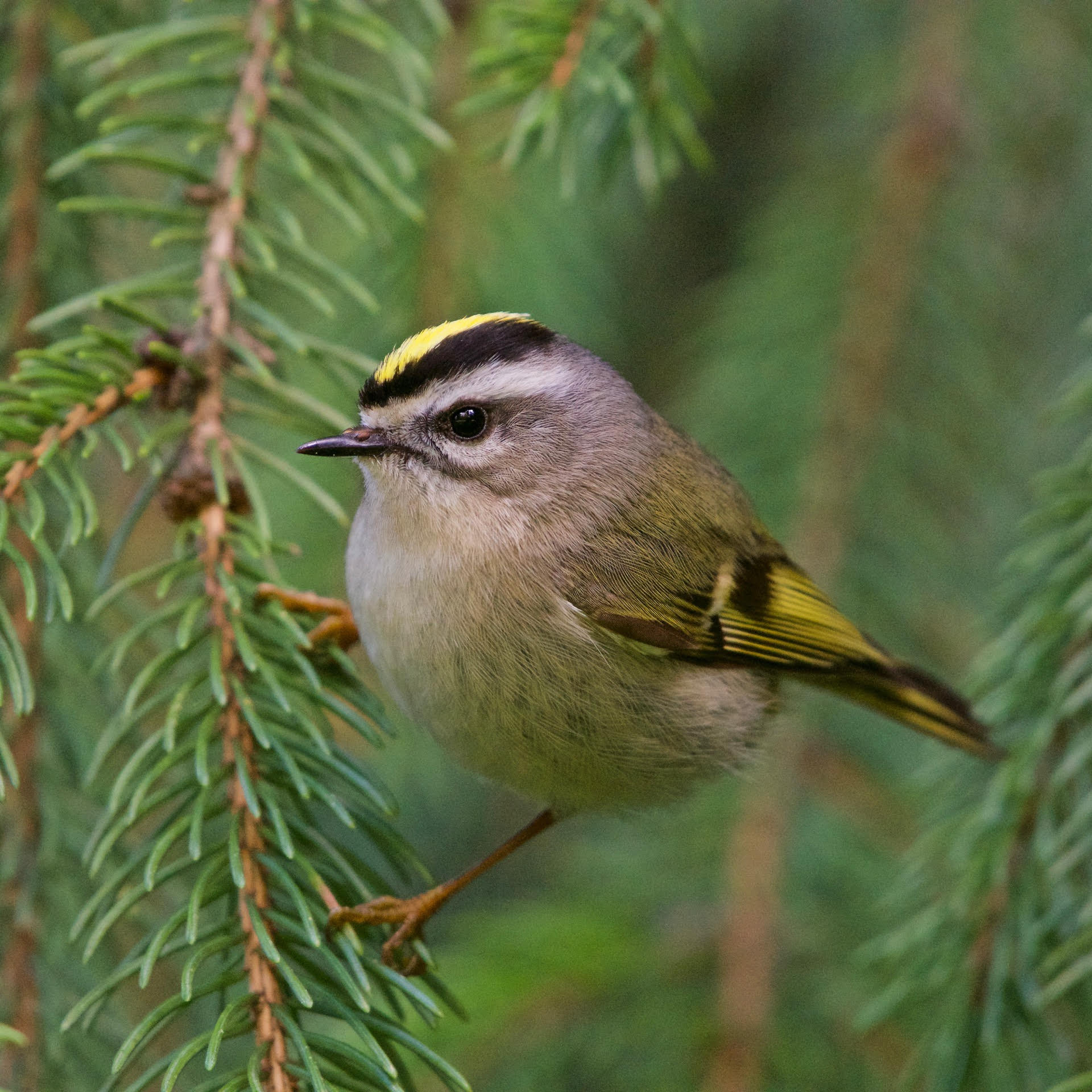
Golden-crowned Kinglet. Photo by Pierre Cenerelli.
This is a male “Audubon’s” in a flowering cherry tree. I’ve been photographing this species in flowering cherry trees for a few years now and I think I may have finally captured a few good images today. Taken April 15, 2018, West Vancouver, BC. Wild, as shot; not baited, called in or set up.
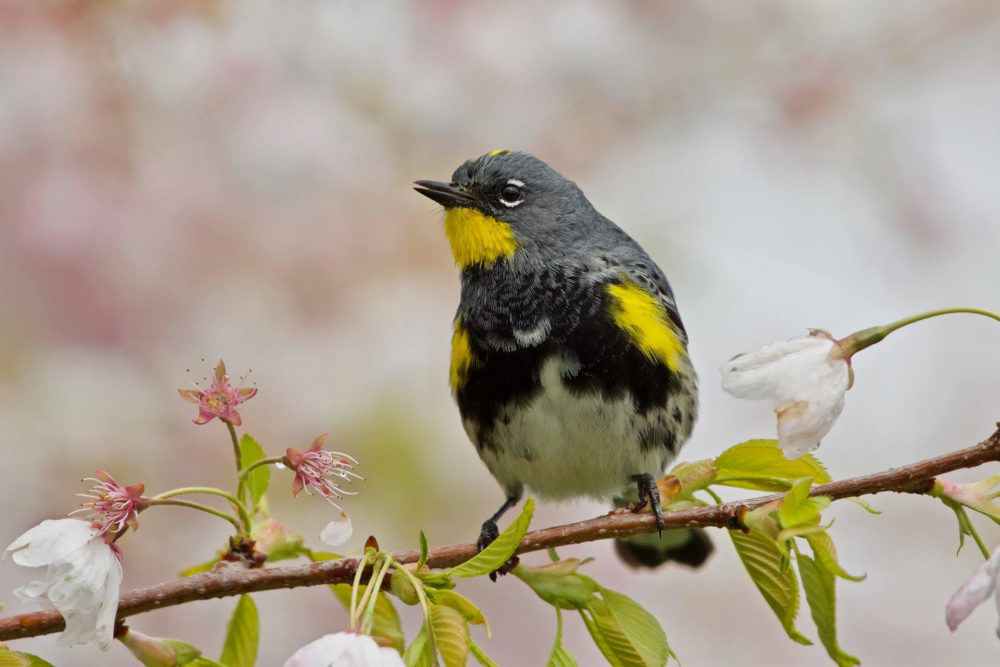
Yellow-rumped Warbler. Photo by Pierre Cenerelli.
I noticed that in his captions Pierre always says his photos are “wild, as shot; not baited, called in, or set up” so I asked him to explain.
PC: One of my main concerns regarding wildlife photography, and especially bird photography, is that we should try to be as non-disruptive as possible. Although the very act of walking among them and taking pictures (or even just watching them with binoculars) can disturb birds, the use of some extreme tactics, such as baiting, can be downright harmful to the birds. “Baiting” is the use of live or frozen bait to lure birds in a specific spot, usually birds of prey, including owls, and kingfishers. Baiting does not refer to photographing birds near feeders, since these are a fairly constant source of food and are less obviously refilled by humans.
Certain species are especially vulnerable to this sort of thing, especially owls. One thing frequently done in this regard is releasing live (or even frozen!) store-bought mice to get that amazing flight shot. Now this is bad on many levels for the birds, but two things stick out: 1) They start to associate food with humans, increasing their risk of being run over by a car or even shot; 2) And even if they resist this, once they leave areas inhabited by humans, their change of habits might make it more difficult for them to find food naturally.
The issues of baiting, calling in and setting up birds are hotly debated within the photographic community. Many of my colleagues are not prepared to denounce them, but I choose to not participate in such tactics. More importantly, I am more likely to respect photographers who proactively disclose any of the tools they use to attract birds. This would at least level the playing field by making it clear that patience and knowledge are the only tools being used to get those great photos.
Before we wind up, Pierre, can you pass on some advice for novice bird photographers, like me?
PC: Practice, practice, practice! I cannot stress this enough: You can have the best equipment in the world, but if you don’t use it in the field — a lot! — your photos will never improve. Linked to this is the fact that you must be prepared to fail repeatedly and spectacularly! It is through these missed shots and opportunities that you will learn how to take better photos.
THANK YOU Pierre!
Pierre is currently setting up a website. In the meantime, check out his photos on Facebook at https://www.facebook.com/avesimago or on Instagram at https://www.instagram.com/pierrecenerelli/
Thank you to Garry Davey for the photo of the juncos. Photos not credited are by Sharon McInnes.
See you next month!



Pingback: I’m back… sort of! – Not only for the birds?
Hi Cynthia. Yes, aren’t Pierre’s photos amazing?
Hi Garry! Glad you liked the article. Thanks for YOUR contribution to it!!
Bev, I love them too, and am thrilled that he has generously offered to share them!
Hi Gilda! Glad you liked the column. Yes, Vancouver is a mecca for birders.
Hi Bev. Yes, there are birds everywhere — although it does take a little more “work” to see the variety you’ll be used to. Lots more crows and gulls and pigeons here!
Hi Gloria! Thanks for your encouragement!
Thanks Glen!
I loved your column. I lived in Vancouver for only two years and I was stunned by how easy it was to see such a variety of birds close up in the city! I miss it. I live in London Ontario now. No comparison!!
awsome !!
Hi Sharon,
This is Gloria from Gabriola and love to read about your city adventures in bird watching.
Enjoy and keep the entries coming.
To Sharon, Thankyou, I am trying to come to terms with giving up my half acre with its multitude of birding opportunities. If you can still enjoy birding from 22 stories up I will be fine!
Absolutely love Pierre’s photos! Thankyou for sharing.
Great article Sharon, very informative, and fun. Pierre’s images are just superb, it’s just terrific that he’s joined forces with you, I’m looking forward to next month already!! Cheers!!
Incredible photography!